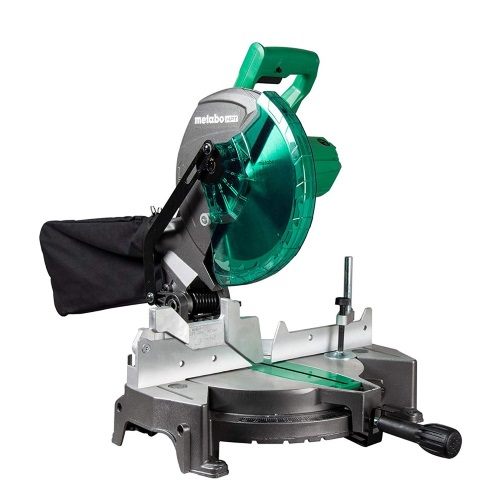3 Different Types of Miter Saws & Their Uses (with Pictures)
-
Pete Ortiz
- Last updated:

With all the saw choices out there, things can get quite confusing. Even if you have, it narrowed down to knowing you need a new miter saw there are still decisions to make. Miter saws are an extremely functional took, and if you are doing almost any type of woodwork, you will likely need to include one as part of your setup. The three types of miter saws are a standard miter saw, compound miter saw, and sliding compound miter saw.
1. Standard Miter Saw

A standard miter saw is a fast and accurate way to cut wood. Standard miter saws come in a variety of sizes and power capabilities, but overall, this is usually a lighter weight tool that works quickly to cut objects. Standard miter saws tend to be priced moderately and are mostly recommended for crosscuts and miter cuts. There are cordless miter saw options available, but the specifications as far as power will be different than a standard miter saw.
What it’s used for
- Any simple crosscut, on at least a 90° and 45° angle
- Usually lower in cost
- Capable of making fast and dependable cuts
- Can get lots of power and size options
- Not very portable
- Larger in size
2. Compound Miter Saw
A compound miter saw can make the same basic cuts that a standard miter saw can, but it is best for bevel cuts. The compound miter saw has more versatility than the standard miter saw. Within the compound miter saw options, you will find some dual bevel models and some single bevel models. The dual bevel will allow compound cuts in both directions without having to flip around the board you are cutting. With the more advanced features of a compound miters saw you could be looking at spending a bit more money with this option.
What it’s used for
- Crosscuts
- Miters
- Bevels
- Compound (miter and bevel)
- Can move around with ease
- Great for bevel cut and compound cut
- Can get in dual bevel mode as well
- Usually a little more expensive
- Not as good for very thick cuts
3. Sliding Compound Miter Saw
A sliding compound miter saw makes the same basic and bevel cuts that the standard and compound saw can make, but it also has sliding capabilities. If you need to cut through more full pieces of wood or metal, you can simply slide the saw blade along a track to cut through the material. There are three types of slidng compound saws: single sliding compound (the blade tips to one side), double sliding compound (the blade tips both left and right), and cordless sliding compound (runs on batteries).
What it’s used for
- Crosscuts
- Miters
- Bevels
- Compound cuts
- Adds the ability to slide
- Great for compound and bevel cuts
- Good for wider pieces of wood
- A little larger than standard compound
- You will pay for extra features
Which Saw Is Best?
None of these types of miter saws are better than the other; they are all just a bit different. We will honestly say that most miter saws are now being made to look and act more like compound miter saws. The benefits of the size and the maneuverability of the compound miter make it a great purchase. As far as the sliding capabilities go, not every woodworker will need this option. If you don’t find yourself cutting through wider pieces of wood, you will likely not need the sliding compound. The sliding compound miter saw is also bigger than the compound, so if you don’t need it, you won’t want to lug it around either.
What About Size?
Each of these miter saws come in a few different sizes. The most common sizes you will come across are 12-inch and 10-inch.
- A 12-inch saw is best if you don’t mind a larger saw and aren’t worried about moving it around much. Since the 12-inch saws have a larger blade and usually a bit more power, they work best when used with a stand.
- A 10-inch saw is the go-to size. If you don’t think you will be cutting deeper material that often and you just want the standard size saw go for the 10-inch, and you will be satisfied.
- Some saws are sold at the eight-inch size as well. These are going to be very compact and will work best for those that need to move this saw with them wherever they go. If you are a carpenter working on trim in a house, this is an excellent option for a saw that can move along with you and cut thinner wood quickly and easily.
 Final Thoughts
Final Thoughts
Now that you have a better understanding of the three different types of miter saws, it should be easier to decide which one you need. Each model has its positives and negatives, but we feel as though the compound miter saw is the most popular choice for the broadest range of users.
See also: an overview of our 5 favorite mitre-saw stands of the year
See Also:
Contents





